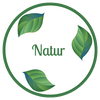|
Here's an ingredient you may not be so familiar with, so let's explore what Dragon's Blood Resin is and how we can use it. Dragon's Blood resin is the wonderfully evocative name given to the red resin that comes from a number of related tree species: Croton, Pterocarpus, Daemonorops or Dracaena, collectively known as 'dragon trees'. These trees are found across South America, Asia and Africa, mainly in tropical regions. Many are endangered, however, so you always want to check the origin of any Dragon's Blood resin you purchase by referring to its Latin name, which will tell you which kind of tree it came from. Dragon's Blood resin has a long history of use by indigenous peoples around the world. Its medicinal properties have in more recent times attracted scientific study. It has well-documented antimicrobial properties, as well as the potential to treat ulcers and inflammation. There have also been studies which suggest it may help to treat diabetes and tumours. Obviously I can't make medical claims for my cosmetics, but I like to include herbal extracts into my products whenever I can nonetheless. Resin is a great binding agent to add into products where we need a smooth texture and staying power. That's why I chose to include a resin in my Luscious Lipstick. I saw a lipstick (which has now been discontinued) from another company using Dragon's Blood resin as an ingredient, which they claimed helped give the colour staying power. So, I decided to experiment. Sourcing Dragon's Blood resin for cosmetics proved tricky, however. Whilst the resin is available to buy all over the internet, cosmetics ingredients require an MSDS in order to be included in a formula, so I needed to find an extract specifically designed for cosmetics. Eventually, I managed to find a glycerine extract of Croton Lechleri, the South American dragon tree, commonly known as sangre de drago in Ecuador, where this particular extract was sourced. I then needed to do some thorough research into its sustainability credentials, checking the company's certifications and ensuring that the extract would be suitable for use in my product. Once this was complete, I ordered a sample of the extract and tested it out in my lipstick formulation. Normally, glycerites can only be used in a product that contains water, because glycerine is an aqueous ingredient. However, my lipstick includes a high percentage of an ingredient commonly known as Ecosilk, which acts as an emulsifier, so I could get away with a small quantity of aqueous ingredients. The viscosity of glycerine means that it is easy to incorporate into the formula. So, what do you think of my Luscious Lipstick? I found the colour lasted pretty well in tests (conducted mainly at parties or in pubs after a show: it's a tough job but someone has to do it). How have you found the staying power of the lipstick? Health benefits of Dragon's Blood Resin: https://www.healthline.com/health/dragons-blood#researched-benefits
0 Comments
Leave a Reply. |
KateThoughts, musings, and ruminations on skincare and related topics. Categories
All
Archives
March 2024
|





 RSS Feed
RSS Feed
